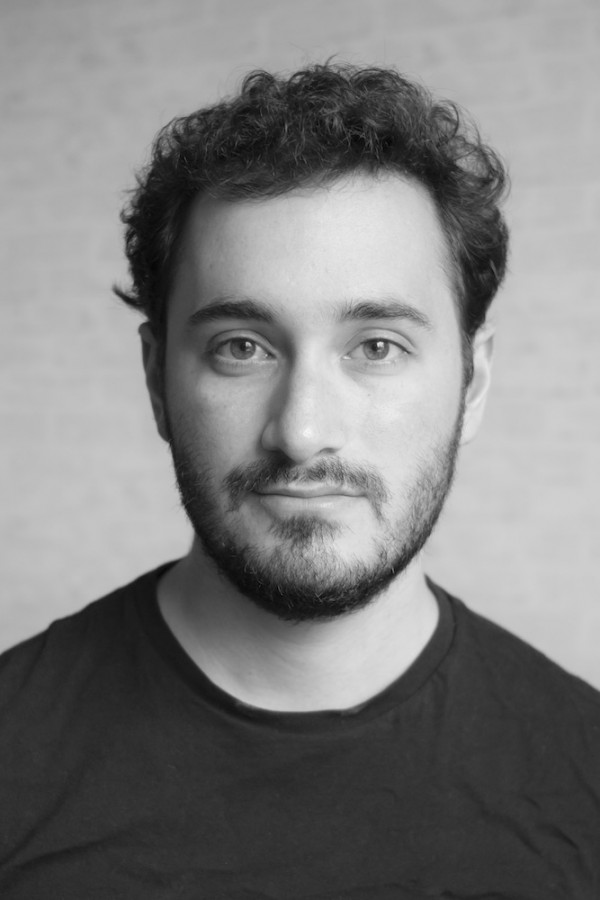
Leica Fotografie International Magazine: 'How to Move a Mountain' by Caleb Stein
A photographic search for traces between craftsmanship and high-tech: where Michelangelo once worked the marble, it is precision robots now shaping the art of tomorrow.
LFI: Your project explores the intersection of traditional sculpturing and modern AI technology. What sparked your interest in documenting this topic?
Caleb Stein: It all began with my father, Seth Stein – a minimalist architect. He introduced me to the Carrara quarry a decade ago, a site that has supplied marble to sculptors like Michelangelo. There, we met a quarry worker who shared the tragic story of his son's death in an industrial accident. His hands, rough as stone, left a profound impact on me. That day, I took thousands of photographs.
Years later, I discovered Robotor (now Litix), a company using robots to create marble sculptures. They serve both neoclassical artists and contemporary figures like Jeff Koons and Zaha Hadid, which intrigued me. I aimed to document the entire marble statue production process—from raw material extraction to robotic carving and artisan finishing. My friend Robert Marston, a CBS producer, helped me to develop a pitch, leading to a commission from Jeff Campagna at the Smithsonian, which granted me access to Robotor. My father, Seth, and my partner, Andrea Orejarena, joined as advisors, significantly shaping the project.
How might we envision the work processes there?
At Robotor, due to non-disclosure agreements, I was only able to photograph one sculpture. The robots work behind dust curtains, beginning with a 3D sketch created by the artist, often in collaboration with Robotor’s (human) technicians. The robots carve using high-pressure water for precision and change tools for accuracy. The robot never gets tired and never sleeps, starkly contrasting the hesitations that often accompany human creativity.
Your images blur the line between documentation and art. Was this a conscious decision?
I wanted my photographs, and the accompanying artist book published by Luhz Press, to function on two interconnected levels: first, I aimed to document the intricate merging of technology and tradition within an ancient context. A mentor once told me that while photographers might see their work as art, every photograph ultimately becomes a document of another time. This idea guided my collaboration with my publisher, Zoe Lemelson, and with curator David Campany. Zoe and I wove 3D schematics into the fabric of the book, using delicate tracing paper to punctuate the sequence of black and white photographs, while David’s critical insight illuminated the relationship between photography and sculpture. In some sense, all the elements in this body of work carry some sort of a documentary quality within them. Second, I wanted to photograph the robot with the same sensitivity I would extend to a person. By juxtaposing its mechanical precision with a sense of tenderness, I aimed to provoke deeper engagement, challenging viewers to rethink their expectations of technology.
What challenges arose during this time?
Initially, I was advised to maintain a safe distance from the robot while it was carving, but I understood that proximity was essential for the images I wanted to make, so I took the risk of going very close as the robot was working. In addition, the narrow, winding roads are perilous, with trucks laden with stone navigating steep paths. The quarry’s history, marked by tragedy and labour struggles, looms large.
How did working with your Leica equipment influence your approach to capturing the quarry environment?
The Leica M10 allows for a tactile and intuitive approach to photography. Its lightweight design enables me to make close, detailed photographs, which are crucial for revealing the nuances of the robot’s work. I have used this Leica across various projects, and its simplicity allows me to focus deeply.
How did your experience photographing the Carrara quarry compare to your previous projects?
Each project possesses its own character. In How to Move a Mountain, I felt a particularly strong connection to the space. Some locations invite a contemplative engagement, and Carrara was one of those places.
How do you think your project adds to the conversation about AI in art?
The enduring myth of the solitary artist persists, yet collaborations have always been integral to artistic practice. This tension – between the romantic idea of the solo artist and the reality of teamwork — is especially interesting now that we have AI. With How to Move a Mountain, I set up a formal contrast between cold industrial precision and the gentle, tender quality of photography. I hope this will make the viewers think differently about technology and what it means to be the creator of a work of art.
How to Move a Mountain

With an essay by David Campany
Edited and designed by Zoe Lemelson
23,5 x 17 cm, softcover
100 pages / 40 plates
Edition of 600: luhz.press
Caleb Stein
Caleb Stein (b. 1994, UK) is a New York-based artist whose work combines a documentary and conceptual approach, often involving collaboration. His work has been exhibited and published internationally and is held in countless permanent collections. Stein's publications include How to Move a Mountain (Luhz Press, 2024), Long Time No See (made as an artist duo with Andrea Orejarena; Jiazazhi Press, 2022), and American Glitch (made with Orejarena; Gnomic Book, 2024). These artist books are held in the special collections at MoMA, The Metropolitan Museum of Art, The Rijksmuseum, Stanford University and Yale University, among other places. Stein is represented by ROSEGALLERY in Los Angeles for his solo work, and for duo work with Orejarena they are represented by Palo Gallery in New York and Vin Gallery in Ho Chi Minh City. Features on Stein's work have appeared in The New York Times, The British Journal of Photography, The Guardian, Vogue Italia, among many other places. More

